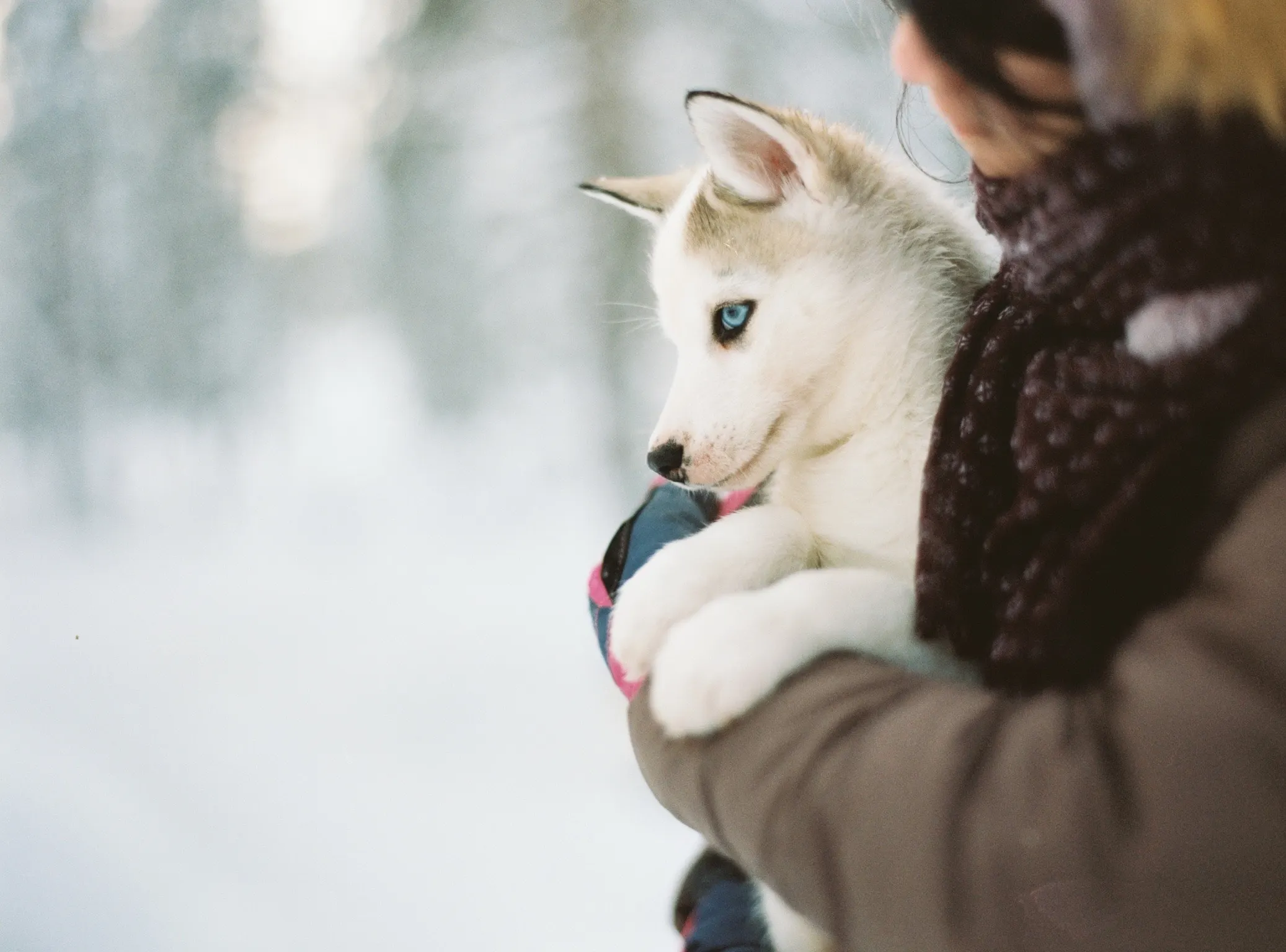Table of Contents
Key Takeaways
- Puppies may be born with blue eyes but experience a color change a few weeks later.
- Puppies’ eyes are closed for up to the first two weeks of their lives.
- Dark brown is the most common eye color in dogs.
- Some breeds of dogs have blue eyes for life, such as the Siberian Husky.
- Puppies’ eyesight matures within about 3-4 weeks so they begin seeing more clearly then.
Blue-eyed puppies are striking to say the least, but how long will the blueish tinge last? Not long, as the eye usually changes to its permanent coloration several weeks down the line. It takes a while to uncover puppies’ “true” eye colors, which can range from brown to amber to the rare permanent blue color.
Why are Puppies Born with Blue Eyes?
All puppies’ eyes appear to be blue when they are very young. As they get older, your puppy’s eye color may change and become darker. Puppies’ eyes start producing melanin when they are a few weeks old, so until this point, their eyes will appear blue. The blue appearance is because, when there is no melanin in the eyes, they appear blue due to the reflection of light on the iris.
When Do Puppies Open Their Eyes?
Puppies’ eyes are closed for the first 8 to 14 days of their lives. Their eyes only begin to reveal themselves — and slowly open after that point. This is the time to enjoy the blue-eyed stage where their eyes are blue and wholly uniform in color, meaning there is no change from the irises to the pupils.
When Do Puppies’ Eyes Change Color?
Around 3 or 4 weeks in age, puppies’ final eye color slowly starts to become visible. The most common eye color on dogs is deep brown, so you might notice the chocolatey tones making their way through around this time. However, the process occurs slowly and doesn’t happen overnight. It often takes nine to 12 weeks, starting from this point, for a puppy’s eye color to settle in and “stay.” The permanent eye color change can even happen as late as 16 weeks in age.
Dog Breeds with Blue Eyes
While the majority of dogs end up with dark brown eyes, some breeds are the exception. The Siberian husky breed is one such example. These snow dogs often have icy blue eyes lasting their entire lifetime. Siberian Huskies also sometimes have two eyes of differing colors called heterochromia — think a single blue eye and a single light yellowish-brown or brown eye. Apart from blue and brown, possible eye colors in dogs run the gamut, just as in people.
Seeing Clearly Now
As puppies’ eyes open, their vision also develops over time, similar to the development of their eye color. When puppies initially open their peepers to their fascinating surroundings, they can’t take much in of what they see — everything still looks rather hazy. At 3 or 4 weeks old, puppies’ eyes generally start to operate like those of adults, similar to the development of their permanent eye color. Enrolling in pet insurance early means that future eye conditions might be eligible for coverage; keeping those baby blues healthy!
This article is provided by Cuteness—the go-to destination for passionate pet parents. Cuteness has answers to all of your health, training, and behavior questions – as well as the cutest, funniest, and most inspiring pet stories from all over the world.
Want to make sure your pets are covered from those unexpected illnesses or injuries with no limits on payouts? Get a quote and make sure you’re covered for those dog and puppy mishaps and unpleasant surprises.







